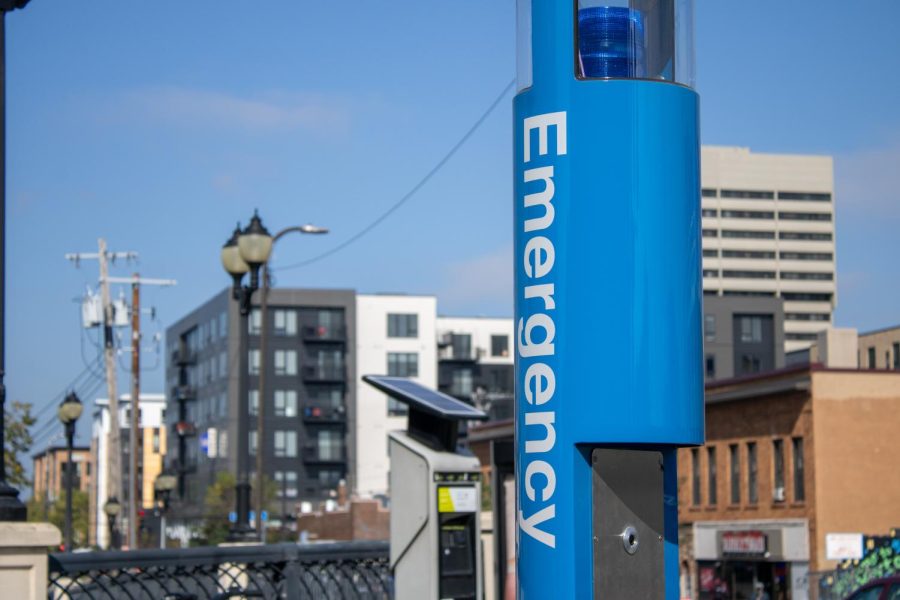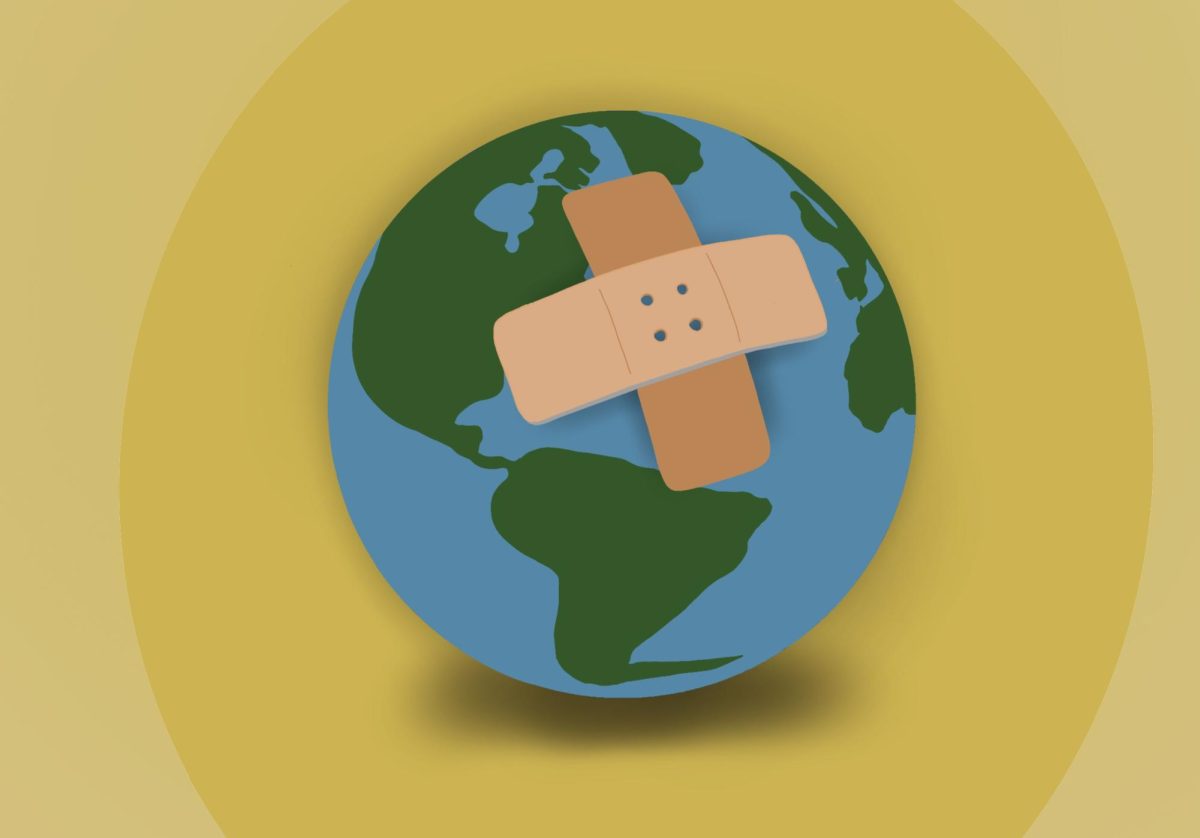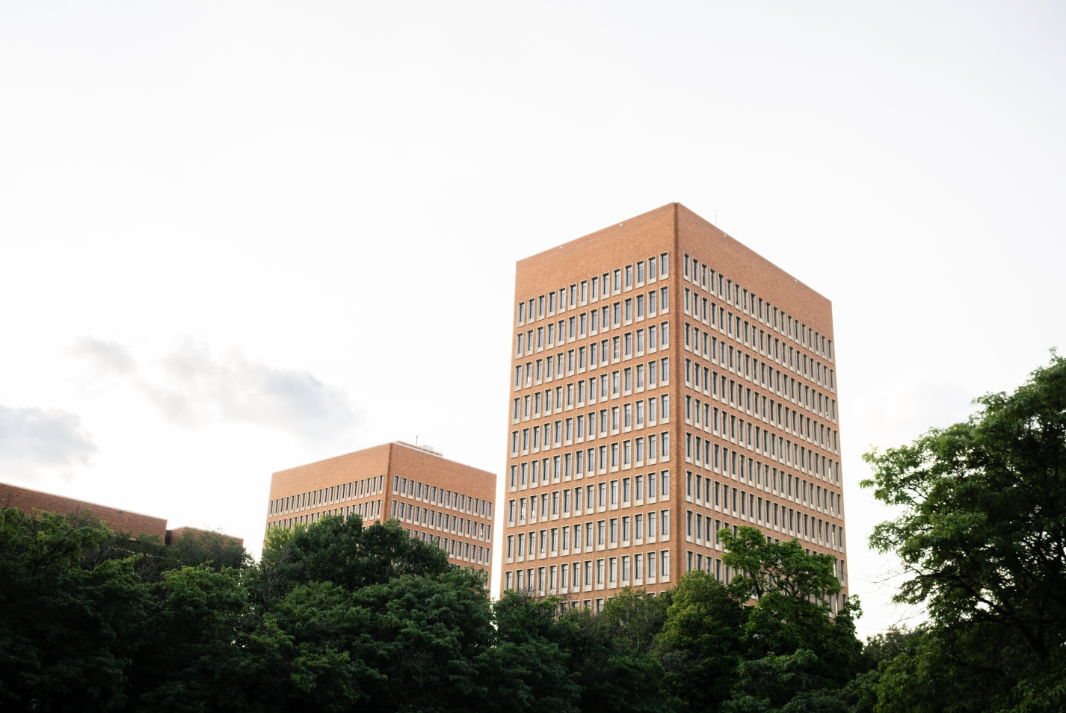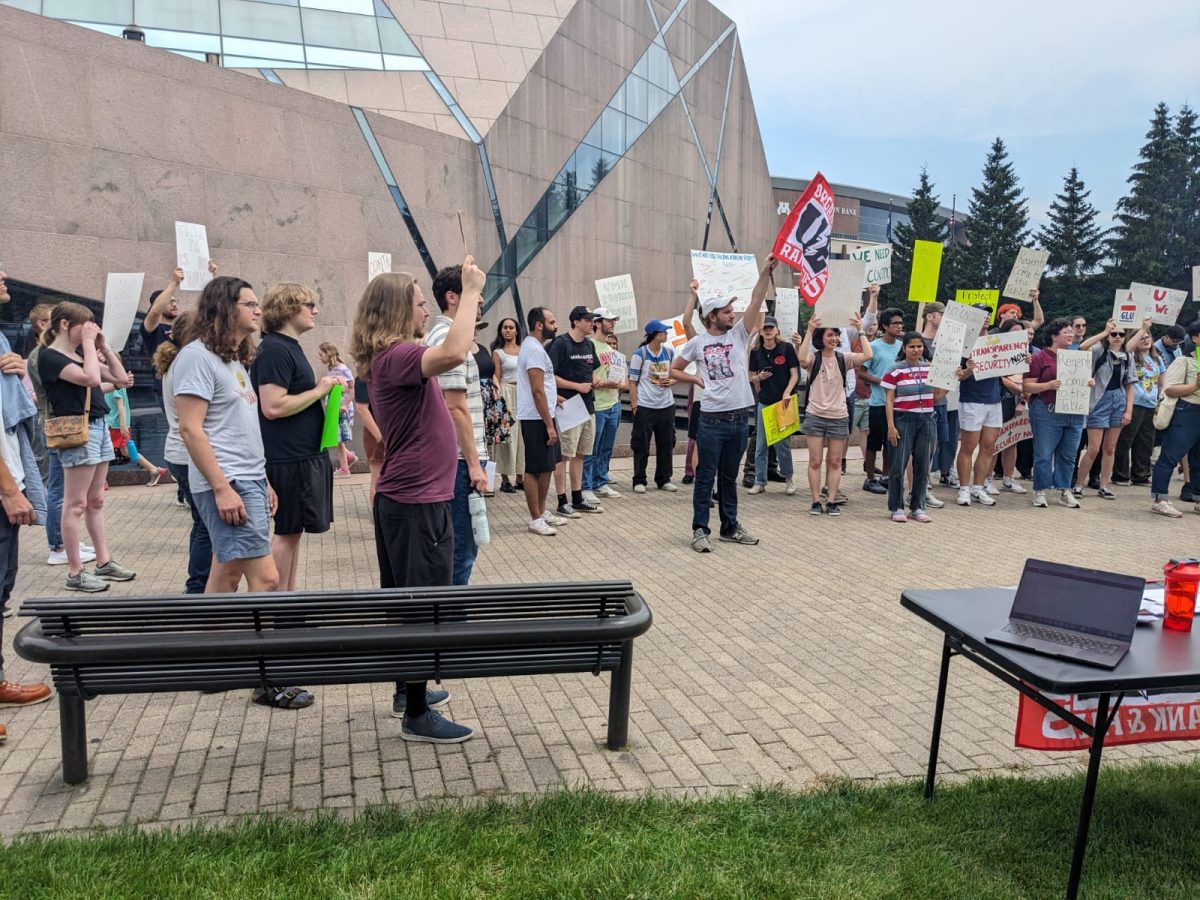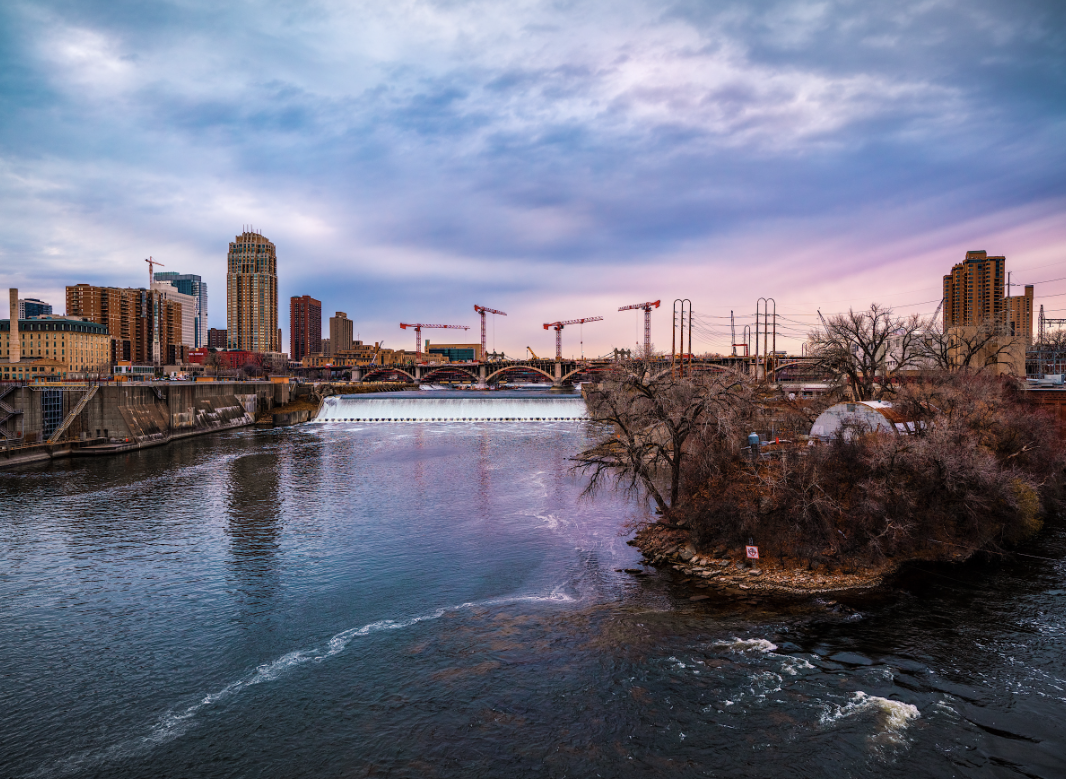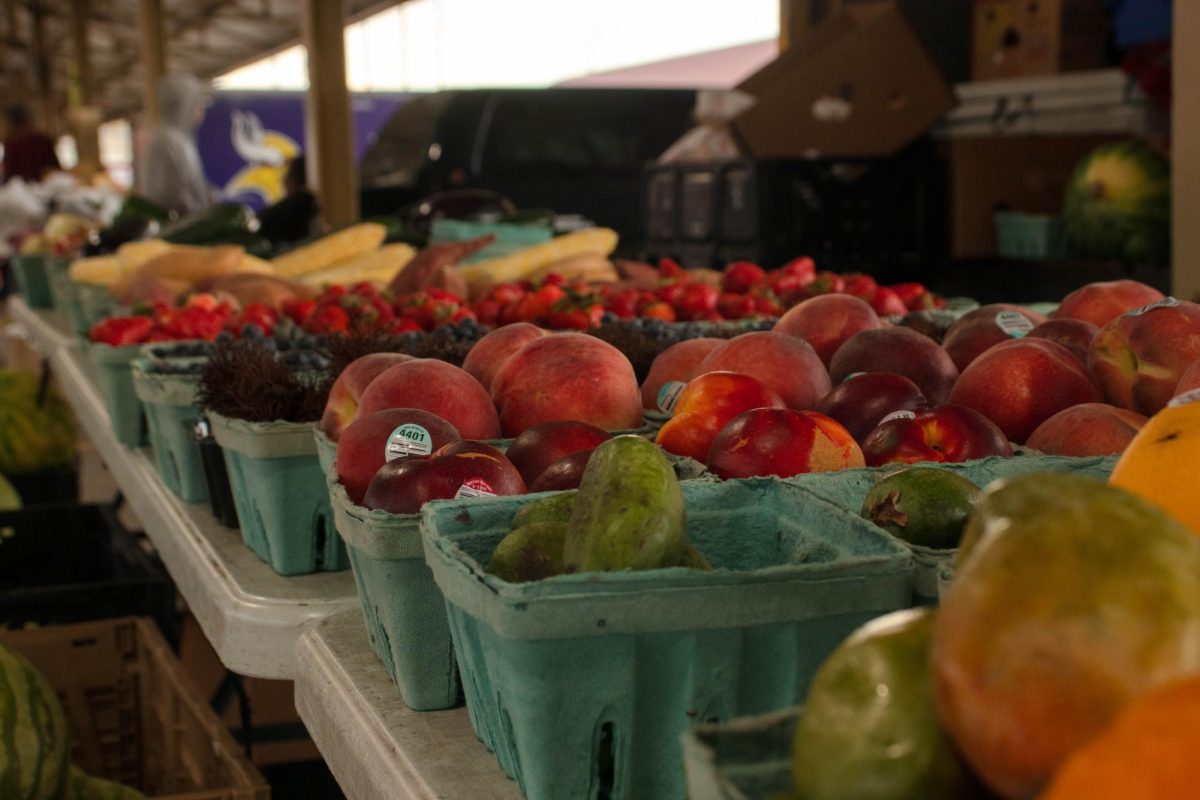Facing pressure to invest more resources into public safety, the University of Minnesota has bolstered infrastructure such as emergency kiosks and street lighting, particularly near and within Dinkytown.
However, some people have questioned whether these investments effectively prevent crime or just create the illusion of safety.
Ahead of the fall semester, the University installed seven new blue light emergency kiosks, which have 24/7 surveillance cameras and a button to press to call police. The University also added two temporary light fixtures in Dinkytown, with plans to add more later this fall.
Since most Dinkytown residents are University students, many students and parents have urged the University to bolster efforts to prevent crime in the neighborhood, which has experienced an increase in violent crime in recent years.
Emergency blue light kiosks make some students feel safer, but may not prevent crime
Senior Vice President for Finance and Operations Myron Frans said with a limited number of security officers because of staffing issues, the University is hoping infrastructure additions, including blue light kiosks, will deter people from committing crimes.
“Kiosks are part of that; if you have the right infrastructure network, then you can see what’s happening easier in this one area,” Frans said. “It will help us be more responsive to emergencies.”
According to a special report from the Department of Justice, during 2011 and 2012, 92% of all college campuses had emergency blue light phone systems. However, little research has been conducted on how they influence crime in the areas they are placed.
Data collected at some universities indicate blue light emergency phones can act as a meaningful deterrent to crime. Rice University in Houston, Texas installed 80 blue light emergency phones in 2010 and by 2011 saw a decrease in on-campus burglaries by 67%.
However, other universities have not seen the same results and some even removed these emergency phones from their campuses due to a lack of use.
In 2016, the Indiana Daily Student found that over the course of 20 years, only four blue light calls were made for legitimate emergencies at Indiana University.
The University said in an email to the Minnesota Daily that they do not regularly track how often blue light emergency phones are used on campus.
“UMPD data shows that behind 911 itself, the blue light phones are the second most recognized/familiar campus safety service or resource,” Jake Ricker, the University’s public relations director, said. “This reflects that the blue lights are resources our community recognizes as an asset should they be in distress.”
Each kiosk costs the University $10,300 with an additional installation cost ranging from $40,000 to $45,000, Ricker said.
Adding more lighting is a priority in funding requests
Minneapolis Mayor Jacob Frey recently announced a $14 million dollar plan to increase street lighting in the city. The University has asked that $2.8 million of that go to additional lighting in areas that surround campus.
According to a 2019 study on how street lighting impacts crime rates, adding lighting to developments in New York City with high crime rates brought felony crimes down by 36%, indicating more street lighting may be effective in preventing crime in urban areas.
The University is also requesting $5 million in the University budget for 2024 to enhance public safety measures. Some of this funding would go toward infrastructure improvements like more lighting, replacing old cameras and updating building access technology.
This proposal will be finalized and voted on at the October Board of Regents meeting.
Professor of Urban Regional Planning at the Humphrey School of Public Affairs Yingling Fan said she does not believe blue light phones and extra lighting are the most effective strategies to prevent crime, but they most likely make students feel more secure on campus.
“I think what it does is to not address the root cause of the problem. It’s just making people feel like they’re safe,” Fan said.
Teagan Stavinoha, a sophomore at the University, agreed that updated infrastructure makes her feel more at ease walking around campus.
“I would say it [infrastructure] makes me feel pretty safe,” Stavinoha said. “I feel like I always feel pretty safe on campus.”
Stavinoha said she heard about the blue light kiosk when she first toured campus, but has never seen them used before. She said if she was in an emergency situation and saw one, she would probably use it, but is unsure if that would be her first response.
“I feel like everyone is just conditioned to call 911,” Stavinoha said.










